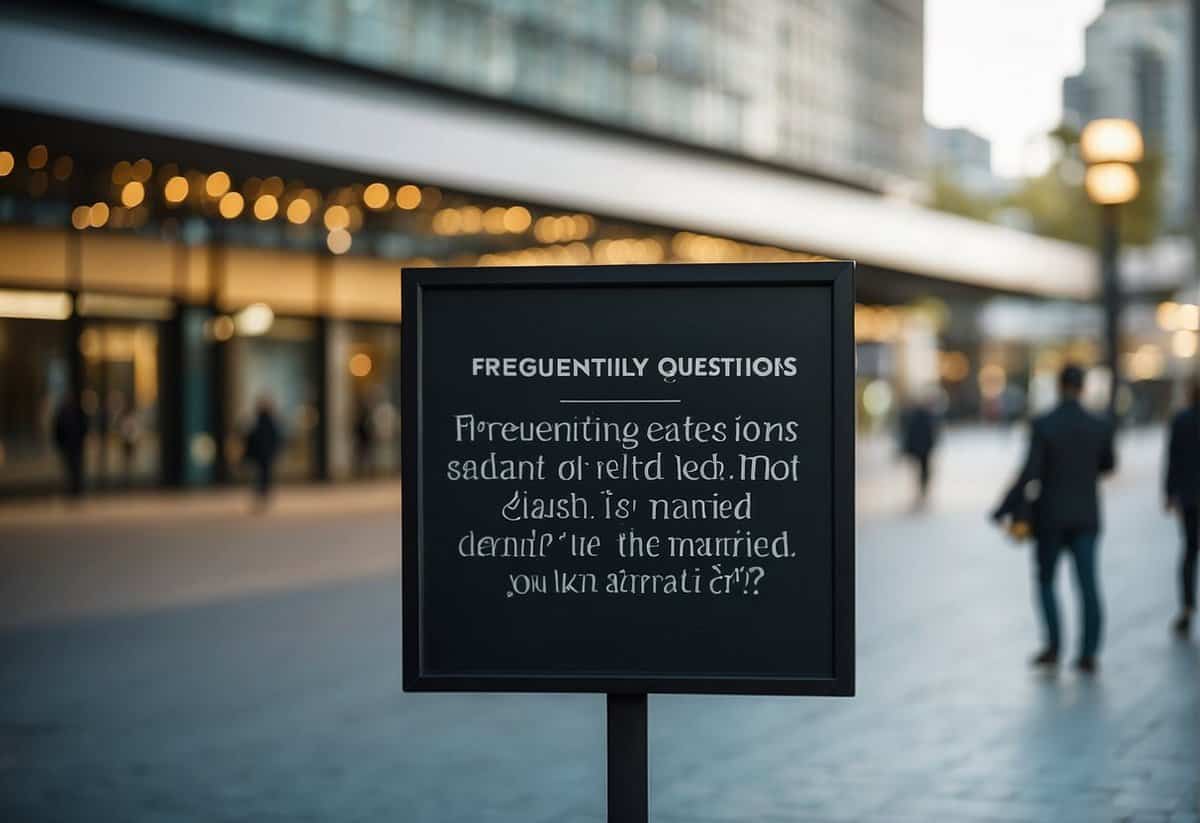Is It Miss If You’re Not Married? Understanding Titles and Marriage Status
Navigating the complexities of social titles can often be confusing, especially when it comes to addressing women based on their marital status. Whether you’re filling out an invitation, making a formal introduction, or writing a letter, knowing whether to use Miss, Mrs., or Ms. can make all the difference in conveying respect. Traditionally, “Miss” has been used to refer to young, unmarried women. However, times are changing, and the importance of titles reflecting marital status is evolving.

In contemporary times, the title “Ms.” has gained popularity as a gender-neutral and marital status-neutral alternative. It is appropriate for women regardless of their marital status and is a title of respect that doesn’t require disclosure of personal information. For those who are unsure of a woman’s marital status or preference, “Ms.” offers a safe and polite option. The way we use titles is not just a matter of etiquette; it reflects our values and attitudes towards gender and social status.
Key Takeaways
- Use “Miss” for young, unmarried women if you’re certain of their preference.
- “Ms.” is a gender-neutral title that can be used when marital status is unknown or irrelevant.
- The choice of title signals respect and adherence to contemporary social etiquette.
Etymology and Historical Usage of Titles

Understanding the evolution of titles can give you a fascinating insight into the social and linguistic changes throughout history. These honorifics have shifted meaning and usage in response to cultural attitudes, particularly concerning gender and marital status.
From ‘Mistress’ to ‘Miss’
‘Mistress’, often abbreviated to ‘Mrs.‘, has a diverse history. Originally, it denoted a woman of higher social status. Over time, ‘Mrs.’ became associated strictly with married women, while ‘Miss’ emerged as its unmarried counterpart. In the 18th century, ‘Miss‘ became widely utilized for an unmarried woman of high social status, evolving from a title for young girls.
Transition to ‘Ms.’
The 20th century witnessed a significant linguistic milestone with the introduction of ‘Ms.’ This gender-neutral honorific allowed women to be addressed without reference to their marital status. Pushed by the feminist movement, it gained wide acceptance, becoming endorsed by influential publications. The call for a gender-neutral honorific found its answer in ‘Ms.’, a title which mirrors ‘Mr.’, the standard for addressing men irrespective of their marital status.
Honorifics in Different Cultures
Honorifics vary significantly across cultures. In some languages, titles do not necessarily indicate marital status; for instance, ‘Frau’ in German is used for women regardless of whether they are married. On the other hand, English introduced ‘Mx‘, a title that is gender-neutral and has been increasingly adopted by institutions and individuals who wish to avoid specifying gender. Meanwhile, ‘Master’ once commonly referred to young boys, but its usage has declined in modern times.
Social Implications of Marital Status Titles

When addressing a woman, your choice of title—Miss, Mrs., or Ms.—conveys not just respect but also an implicit message about her marital status. The labels we use are more than just formalities; they reflect societal attitudes toward gender and marriage.
Modern Perspectives on ‘Miss’ and ‘Mrs.’
In the past, ‘Miss’ traditionally referred to an unmarried woman, while ‘Mrs.’ indicated a married woman. This distinction made it easy to infer a woman’s marital status simply by her title, which in some social and professional contexts, was considered necessary information. However, modern views often see this as an outdated and unnecessary practice. Many people now question why women should be addressed by titles that highlight their marital status when men are referred to simply as ‘Mr.’ regardless of whether they are married or unmarried. This transition represents a broader shift towards a society that respects a woman’s choice to be identified without reference to her marital status.
The Choice of ‘Ms.’ in Professional Settings
The use of ‘Ms.’ in professional settings has become a standard for addressing women without implying marital status. This title is now widely accepted as a polite and respectful formality that aligns with the principles of gender equality. It’s a way of acknowledging a woman’s professional identity rather than her personal life, which can be crucial in business environments where personal information such as marital status is irrelevant. The preference for ‘Ms.’ also reflects a respect for personal preference, allowing women the option to keep their marital status private if they choose.
Usage of Titles in Formal and Social Contexts

Choosing the appropriate title when addressing someone formally or in a social setting is important. You’ll want to use titles correctly to show respect and adhere to etiquette.
Addressing Individuals in Writing
When you’re writing, especially something like wedding invitations, it’s crucial to know the correct title to use based on the marital status and preference of the individual you’re addressing. For married women, “Mrs.” followed by her spouse’s surname is traditional. However, “Ms.” is a title of respect that does not denote marital status and can be used for any adult woman regardless of her marital status. Always use “Dr.” for individuals with a doctoral degree, regardless of their gender. For military titles, such as “Lieutenant,” the same approach applies. Make sure to spell out these formal titles fully to avoid any sign of disrespect.
- Wedding Invitation Example:
- Single Woman: Miss Jane Doe
- Married Woman: Mrs. John Smith
- Divorced/Unmarried, Prefers Neutral Title: Ms. Jane Doe
- Person with a Doctoral Degree: Dr. Jane Doe
- Military: Lieutenant Jane Doe
Verbal Address and Pronunciation
When speaking to someone, pronunciation of their title is as important as using the correct form. For instance, “Mrs.” is pronounced as miss-iz, while “Ms.” is miz, and “Miss” is just as it’s spelled. Always use the person’s last name after the title unless you’re invited to use their first name. This is considered proper etiquette in most formal settings. In less formal or more familiar contexts, it might be acceptable to use just the first name, but watch for cues and let the other person take the lead.
- Formal Verbal Examples:
- “Good morning, Mrs. Smith.”
- “Hello, Dr. Johnson.”
- “Thank you, Lieutenant Ford.”
Remember to adhere to these guidelines to maintain formal etiquette in both your writing and speech, ensuring you address individuals appropriately in various contexts.
Frequently Asked Questions

In this section, you’ll find straightforward answers to common questions about formal titles for women whether they are married or not.
What is the proper title to use for an unmarried woman?
The title “Miss” is traditionally used for young, unmarried women. Another increasingly common option is “Ms.,” which is a neutral title that does not denote marital status.
How should a married woman formally address herself, as Mrs. or Ms.?
A married woman may choose to use “Mrs.” followed by her spouse’s last name, her own name, or a combination of both. However, “Ms.” can be used regardless of marital status and is appropriate for women who prefer not to disclose their marital status.
What do the titles Mr., Mrs., Ms., and Miss signify?
“Mr.” is a title for men without indication of marital status. “Mrs.” indicates a married woman, “Ms.” is a neutral title for women, and “Miss” is typically for young, unmarried women.
How are the titles Miss, Mrs., and Ms. pronounced differently?
“Miss” is pronounced as [miss], “Mrs.” sounds like [missiz], and “Ms.” is pronounced [miz].
What title is appropriate for a woman whose marital status is unknown?
When a woman’s marital status is unknown, “Ms.” is a safe and respectful choice. It is a customary title that’s commonly used in professional settings.
Can a married woman still be referred to as Miss?
Usually, “Miss” is used for an unmarried woman. A married woman would not usually be referred to as “Miss,” as “Miss” denotes a younger, unmarried woman. However, some married women who keep their maiden names might still choose to use “Miss.”
